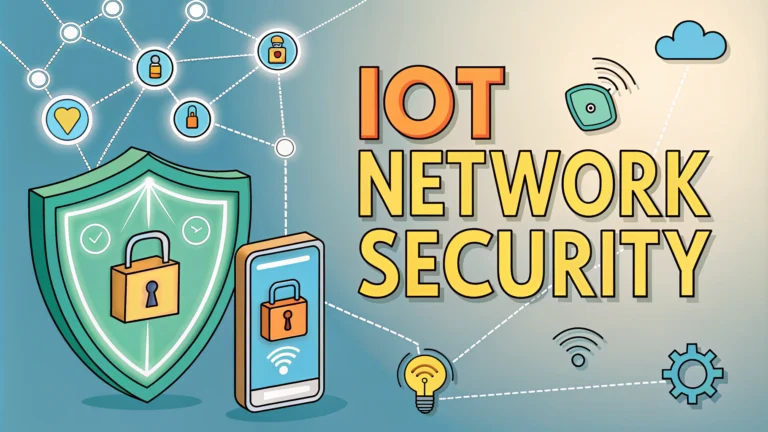IoT network security testing helps organizations identify and fix vulnerabilities in their connected device infrastructure before malicious actors can exploit them.
Proper penetration testing of IoT networks requires specialized knowledge of protocols, hardware, and potential attack vectors unique to connected devices.
This guide covers essential IoT penetration testing techniques, tools, and methodologies to help secure your IoT deployments.
Getting Started with IoT Penetration Testing
A thorough IoT security assessment begins with mapping out all connected devices, communication protocols, and potential entry points.
- Document device inventory and network topology
- Identify protocols in use (Zigbee, Z-Wave, BLE, etc.)
- Map data flows between devices, gateways, and cloud services
- Review firmware versions and patch status
- List exposed ports and services
Essential IoT Testing Tools
These specialized tools help analyze IoT device and network security:
- Wireshark – Network protocol analyzer
- Nmap – Network discovery and security scanning
- Metasploit – Penetration testing framework
- Aircrack-ng – Wireless network testing
- RFCrack – RF protocol analysis
Common IoT Attack Vectors to Test
- Default credentials and weak authentication
- Unencrypted communications
- Firmware vulnerabilities
- API security flaws
- Physical security bypass
- Protocol-specific attacks
- Man-in-the-middle attacks
Testing Methodology
Follow these steps for a structured IoT security assessment:
- Information gathering and reconnaissance
- Vulnerability scanning
- Wireless security testing
- Protocol analysis
- Firmware analysis
- API security testing
- Physical security assessment
- Exploitation attempts
- Documentation and reporting
Best Practices for IoT Security Testing
- Test in an isolated environment when possible
- Maintain detailed logs of all testing activities
- Use non-destructive testing methods first
- Follow responsible disclosure procedures
- Verify findings with multiple tools
- Document all discovered vulnerabilities
Resources and Training
Recommended resources for IoT security training:
- Offensive Security – Advanced penetration testing courses
- SANS Institute – IoT security training
- Rapid7 – IoT security tools and research
- IoT Security Foundation – Best practices and guidelines
Next Steps for Your IoT Security Program
Build a regular testing schedule and keep up with new IoT security threats and vulnerabilities.
Document findings and create an action plan to address discovered security issues.
Consider hiring certified IoT security professionals or partnering with security firms specializing in IoT testing.
Continuous Security Monitoring
Implement ongoing security monitoring systems to detect and respond to threats in real-time:
- Deploy network monitoring solutions
- Set up automated vulnerability scanning
- Establish incident response procedures
- Monitor device behavior patterns
- Track security metrics and KPIs
Regulatory Compliance
Industry Standards
- NIST Cybersecurity Framework
- ISO 27001
- GDPR requirements for IoT
- Industry-specific regulations
Documentation Requirements
- Test results and reports
- Remediation plans
- Compliance certificates
- Risk assessments
Advanced Testing Scenarios
- Supply chain security verification
- Cloud infrastructure testing
- Edge computing security
- Device attestation testing
- Zero-day vulnerability research
Securing Your IoT Future
Regular penetration testing is crucial for maintaining robust IoT security. Organizations should:
- Develop comprehensive security policies
- Maintain updated threat models
- Invest in security awareness training
- Build security into the IoT lifecycle
- Stay informed about emerging threats
Remember that IoT security is an ongoing process, not a one-time effort. Continuous improvement and adaptation to new threats will help protect your IoT infrastructure against evolving security challenges.
FAQs
- What is IoT penetration testing and why is it important?
IoT penetration testing is a systematic security assessment process that identifies vulnerabilities in Internet of Things devices, networks, and ecosystems. It’s crucial for preventing data breaches, device hijacking, and network compromises in IoT deployments. - What are the main areas covered in IoT penetration testing?
IoT penetration testing covers device hardware security, firmware analysis, wireless communication protocols, web interfaces, mobile applications, cloud APIs, and network infrastructure that supports IoT operations. - Which common protocols should be tested during IoT network security assessment?
Key protocols to test include MQTT, CoAP, ZigBee, Z-Wave, Bluetooth Low Energy (BLE), Wi-Fi, and cellular communications like NB-IoT and LTE-M. - What tools are essential for IoT penetration testing?
Essential tools include Wireshark for network analysis, Nmap for network discovery, Metasploit for exploitation testing, Burp Suite for web interface testing, and specialized IoT testing tools like AttifyOS and IoTSecFuzz. - How do you test IoT device firmware security?
Firmware testing involves extracting the firmware, analyzing binary files for vulnerabilities, checking for hardcoded credentials, identifying unsafe update mechanisms, and testing for buffer overflow vulnerabilities. - What are the most critical IoT security vulnerabilities to test for?
Critical vulnerabilities include weak authentication mechanisms, unencrypted communications, insecure default settings, outdated firmware versions, exposed debugging interfaces, and insufficient access controls. - How often should IoT penetration testing be performed?
IoT penetration testing should be conducted at least annually, after major system updates, when new devices are added to the network, or when significant network architecture changes occur. - What compliance standards need to be considered during IoT penetration testing?
Key standards include OWASP IoT Top 10, NIST guidelines for IoT security, GDPR for data protection, HIPAA for healthcare IoT, and industry-specific regulations like IEC 62443 for industrial IoT. - How do you assess the security of IoT cloud communications?
Cloud communication assessment involves testing API security, evaluating data encryption in transit and at rest, checking authentication mechanisms, analyzing access controls, and testing for secure session management. - What are the best practices for IoT network segmentation testing?
Test for proper network isolation, verify VLAN configurations, assess firewall rules, check for appropriate access control lists, and evaluate the effectiveness of network segregation between IoT and IT networks.







